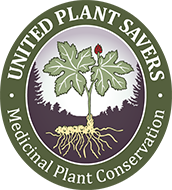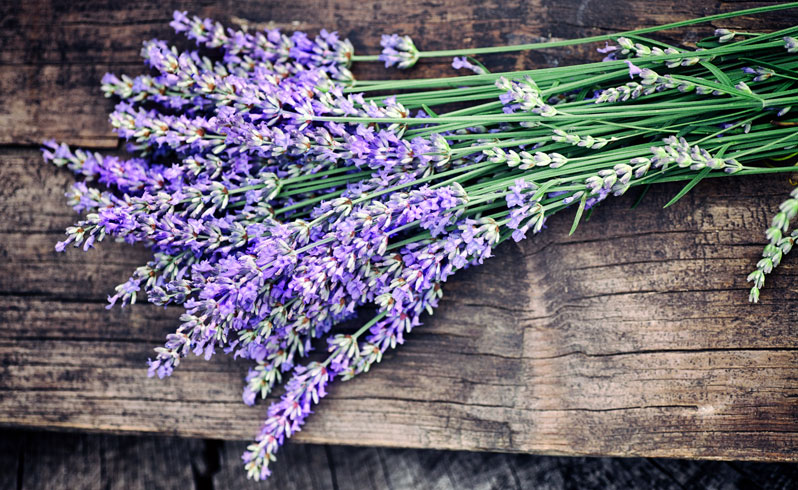
Stress can be rewarding and even pleasant in response to positive stimuli, encouraging intellectual and emotional growth and development. Most often, when we discuss being “stressed out” in a modern context, it is in reference to negative physical or psychological stimuli and an unpleasant reaction. Stress is generally defined as a state of disharmony (allostasis) and is counteracted by physiological and behavioral responses which aim to reestablish homeostasis via the adaptive stress response.1
According to the General Adaptation Theory of Selye, the three phases of stress are alarm reaction, resistance phase and, the physiologically most harmful, exhaustion phase.2 Within moments of an acutely stressful event, norepinephrine and epinephrine are released from nerve endings and the adrenal glands, inducing the “fight, flight, or freeze” response of the sympathetic-adrenomedullary (SAM) axis during the alarm phase.3 When the stressful stimulus is sustained, the hypothalamic-pituitary-adrenal (HPA) axis activates the adrenal glands to secrete extra cortisol into circulation, along with glucagon to increase blood glucose and anti-diuretic hormone to conserve salt and water loss in the resistance phase.
These changes are all adaptive under normal conditions and improve chances of survival of the organism. However, if the stress adaptation response is sustained overtime, the specificity of the adaptive response decreases, resulting in chronic stress or stress syndrome of the exhaustion phase.1 Within this final phase there are several stages ranging from mild to severe exhaustion. Terms that refer to the physiological processes of the exhaustion phase include adrenal fatigue, adrenal dysregulation, HPA axis dysfunction, and hypoadrenia.4 These are all simplistic terms that represent a complex cascade of biological and physiological deficits resulting from a sustained stress response.
The body adapts to stress by redirecting oxygen and nutrients to increase cardiovascular tone, respiratory rate, gluconeogenesis, and lipolysis while digestion, reproduction, growth, and immunity are suppressed. If these adaptations are sustained over time they can result in structural and functional damage to vital organ systems.1 Chronic stress is implicated in a wide range of disease processes including cognitive decline, immunosuppression, neuropsychiatric conditions, heart disease, blood sugar dysregulation, and digestive problems. Stress-induced health decline is the result of many physiological consequences, such as the increased production of stress hormones, and their subsequent effects on body systems including depressed immune function, inflammation, appetite and sleep disruption.3,5
Botanicals that help the body “adapt” to stress are classified as adaptogens. They are defined as metabolic regulators that work to increase our resistance to stress thereby increasing our ability to adapt and survive.6 They act nonspecifically, normalize biology regardless of the direction of pathology, and they are safe.7
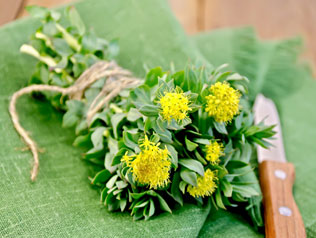
The stress-inhibiting activity of adaptogens is not specific, but rather acts through numerous molecular networks, influencing feedback regulation of the neuroendocrine and immune systems. Adaptogens act on multiple receptors including corticosteroid, mineralocorticoid, progestin, estrogen, serotonin, nicotinic acetylcholine, and many G protein-coupled receptors.
For example, low doses of stress increase the resistance of cells and organisms to subsequent stress exposure, resulting in adaptation that favors survival. Adaptogens stimulate the release of stress hormones neuropeptide-Y and heat shock protein-72 into circulation. The release of these hormones into the bloodstream is part of the innate defense response to mild stressors, in this case adaptogens, which increases tolerance and adaptation to stress, giving rise to stress-protective effects. Some adaptogens, including Schisandra chinensis and Rhodiola Rosea, restore the negative feedback cycle of glucocorticoid receptors in the brain which then inhibits the release of excess cortisol from the adrenal glands into circulation.6
Withania somnifera (Ashwagandha) is adaptogenic, antioxidant, anti-inflammatory, immunomodulating, neuroprotective, hematopoietic, iron-rich, and restores hemoglobin levels.7,8 Stress increases metabolism and causes nutrients like iron to be used up at a higher rate. Consider Ashwagandha in cases where chronic stress leaves someone so depleted that they become iron-deficient.7 The roots of Ashwagandha are used and consist primarily of steroidal compounds known as withanolides, as well as other alkaloids, saponins, and flavonoids.
One theory suggests withanolides act by occupying steroid receptor sites in the body and exerting an amphoteric effect, either blocking the effect of the endogenous hormone if it is in excess or exerting a small physiologic effect in lieu of the endogenous hormone if deficient.5 This is an example of an adaptogen normalizing biology regardless of the direction of pathology. In one double-blind, placebo-controlled trial, 64 subjects were randomized to receive either 300 mg of full-spectrum Ashwagandha root extract or placebo. After 60 days the group treated with Ashwagandha showed a statistically significant reduction in stress assessment scores as well as serum cortisol levels.8 Because Ashwagandha is a calming herb with mild sedative, anxiolytic, antidepressant, and thyroid-modulating activity, it is indicated in chronically stressed individuals with difficulty sleeping, anxiety, depression, hypothyroidism and/or Hashimoto’s thyroiditis.7,9
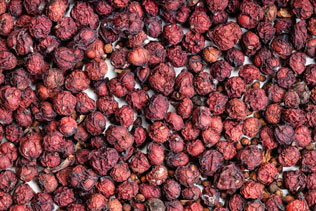
Schisandra chinensis (Schisandra) berry is used in traditional Chinese medicine. It is a multi-system tonic, also called “five-flavor berry” with a profile of sweet, spicy, sour, bitter, and pungent notes that correspond to various organ systems.7 Schisandra works on just about every vital organ with anti-inflammatory, antioxidant, hepatoprotective, cardioprotective, neuroprotective, gastroprotective, immunomodulating, antidepressant and anxiolytic activity.9,10,11 In traditional Chinese medicine Schisandra is said to ‘prolong the years of life without aging,’ increase chi (energy), treat fatigue and debility.9 It is a warming, calming herb and a useful adaptogen for those suffering the effects of long-term stress on multiple organ systems. Active constituents include schisandrin B, a lignan which is structurally like catecholamines epinephrine, norepinephrine, and dopamine. Schisandrin B has been shown to stimulate the expression of heat shock protein Hsp70 in vivo, which is associated with the enhancement of mitochondrial glutathione status, antioxidant activity, ATP generation, and mitigates age-related impairment in various tissues.10,11
In one study, 45 postmenopausal women were randomized to receive either 1000 mg Schisandra extract or placebo. After 12 weeks, the Schisandra treated group showed statistically significant increase in muscle strength and reduction in lactate levels, possibly by improving ATPase activity and mitochondrial function.12 Russian research studies have shown administration of Schisandra via tincture, decoctions, and tablets effective in the treatment of general exhaustion and reduced physical and mental performance, as well as a reduction in listlessness and an increase in overall wellbeing.13 Like Ashwagandha, Schisandra is an adaptogenic nervine indicated in those with sleep and anxiety disorders.7
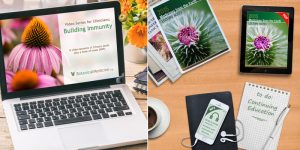
Continuing Education
If you are a naturopathic physician interested in continuing education credits, visit our Naturopathic CE page.
Rhodiola Rosea (Rhodiola) root has adaptogenic and antioxidant properties attributed to phenylpropanoids, as well as flavonoids, triterpenes, monoterpenes, and phenolic acids. Its mechanism of action is partly attributed to Rhodiola’s ability to influence levels of monoamines including serotonin, dopamine, and norepinephrine in the cerebral cortex, brainstem, and hypothalamus by inhibiting degradation enzymes and facilitating neurotransmitter support in the brain, preventing the depletion of catecholamines by acute stress. Rhodiola has been used for centuries in Russia and other countries as a treatment for fatigue, depression, and to promote physical endurance and longevity.9
In one clinical trial, participants given 200 mg of Rhodiola rosea extract twice daily experienced improvement in subjective symptoms of stress over the course of four weeks, with improvements noted as early as three days into treatment.14 Another study found that participants treated with Rhodiola rosea extract had significantly reduced cortisol levels in response to awakening stress compared to placebo, as well as improvements in fatigue and mental performance.15 Rhodiola rosea can be considered a neuroprotective adaptogen that is useful in cases of fatigue, anxiety, or depression, as it helps to restore neurotransmitter levels including serotonin, dopamine, and catecholamines.
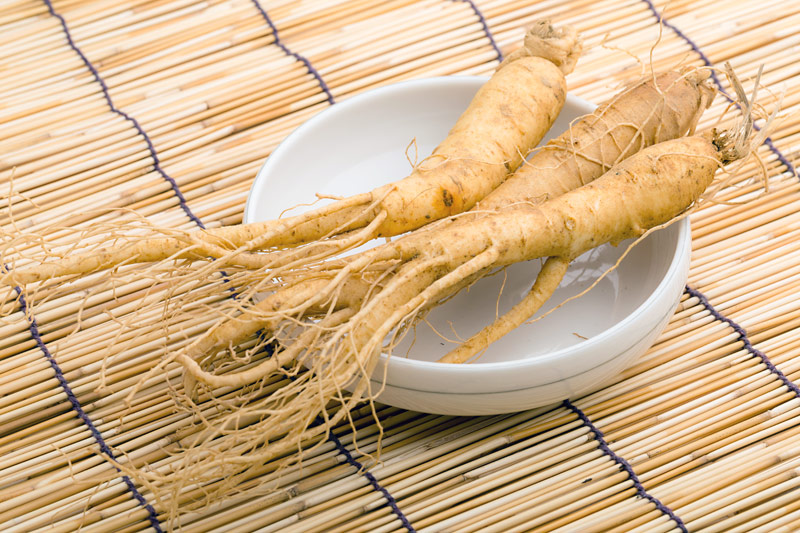
Eleutherococcus senticosus (Eleuthro) root is used in traditional Chinese medicine for general weakness and debility, insomnia, and dream-disturbed sleep. Eleuthro has demonstrated ability to improve adrenal function, stress tolerance, immune function, resistance to infection, and selective memory. It contains lignans like eleutheroside E, saponins like beta-sitosterol, vitamins and provitamins including beta-carotene and vitamin E.9 In one randomized study, Eleuthro supplementation reduced cardiovascular responses to a stressful stimulus in healthy adults.16 It may also improve moderate fatigue in chronic fatigue syndrome (CFS).17
Eleuthrococcus senticosus and Panax ginseng (Asian ginseng) contain natural lignans that can both increase and decrease the stress response by increasing or decreasing the occupancy of stress hormone receptors. In this way they can give someone more energy or redistribute the body’s energy reserves from increased activity to restoration.18 Like Ashwagandha, these adaptogens exert an amphoteric effect that balances the system regardless of the direction of pathology.
Adaptogens pair well with other adaptogens, as well as with nervine botanicals to help modulate short- and-long-term responses to stressful stimuli. Botanical nervines are an evidence-based tool to manage chronic and acute stress states. They are largely safe with minimal side-effects or addictive potential.
Lavandula spp., commonly known as Lavender, is derived from the Latin word “lavare” meaning “to wash.” It is commonly used in bath, cosmetic, perfume, and food industries. Though all aerial parts contain medicinal constituents, the flowers are primarily used for their essential oils, anthocyanins, phytosterols, sugars, minerals, and tannins.19 The aromatherapeutic value of lavender essential oil in relieving stress has been clearly demonstrated in numerous studies. In one randomized controlled trial (RCT) involving 60 coronary ICU patients, inhalation of a 2% lavender essential oil resulted in subjective improvement in sleep quality and anxiety symptoms.20 A meta-analysis of RCTs concluded that lavender aromatherapy can relieve anxiety, reduce systolic blood pressure, heart rate, as well as salivary stress markers cortisol and chromogranin A.21 Lavender aromatherapy has favorable effects on the physiological and biological manifestations of both acute and chronic stress states.
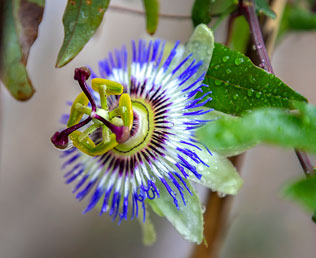
Passiflora incarnata (Passionflower) is native to the southeastern United States, Central and South Americas. It has been used by the indigenous people of North and Central America as a food plant, bearing passion fruit, and in indigenous traditional medicine as a sedative.22 Passionflower’s role in sedation and sleep is thought to be due to the GABAergic receptor activity of constituents apigenin, alkaloids, and flavones as demonstrated in vitro and in murine models.23 As sleep disruption is a highly prevalent consequence of stressful life events, utilizing sedative herbs like passionflower can be a safe and effective way to restore sleep, preventing long-term detrimental health effects that result from chronic sleep deprivation. The anxiolytic effect of Passiflora incarnata has been comparable in clinical trials to the benzodiazepine oxazepam for the treatment of generalized anxiety disorder and preoperative anxiety.24,25,26 As anxiety is a common reaction to a significant life stressor, passionflower can be considered to aid in modulating this part of the stress response.
Avena sativa (oat) grain is commonly incorporated into the western diet as oatmeal, though extracts of the immature seed and oat straw can also be used medicinally.27 “Milky oat seed” (aka green oat) refers to the seed of Avena sativa in its immature form. Milky oat seed contains phytochemicals, including triterpene saponins, that may improve mood or protect against stress. In one study, 132 individuals were randomized to receive a daily dose of 430 mg, 860 mg, or 1290 mg of milky oat extract (cognitaven®) or placebo. Dose-dependent improvement in cognitive function, specifically working memory and multitasking, was observed after a single dose of the extract and, after consuming the highest dose of the extract for 29 days, participants had a significantly lower electrodermal stress response during a lab-induced stressful situation than the placebo group.28 Milky oat seed is gentle and acts immediately to calm and gradually to tonify the nervous system. It is one of the few nervines that is not spasmolytic and therefore safe to use during pregnancy. It is not sedative and is safe to use with anxiolytic, psychiatric, and/or sedating medications.27
Adaptogens and nervines pair well to support those impacted by chronic stress. As specific body systems are impacted by chronic stress, botanical treatments can be implemented to support the affected systems. Nutritive herbs like Urtica dioica and Medicago sativa, hormone-balancing herbs like Vitex agnus-castus, cardioprotective herbs like Crataegus laevigata and hepatoprotective herbs like Silybum marianum may be indicated.
Other noninvasive approaches to consider for stress mitigation include yoga, mindfulness-based stress reduction, biofeedback, neurofeedback, and noninvasive brain stimulation therapies.29,30,31 For those whose circadian rhythm has been impacted, consider approaches to restore the sleep-wake cycle, such as regular bed and wake times, exposure to direct daylight on waking, and dimming the lights in the evening to prepare the brain for sleep. Gentle exercise including yoga, swimming, or walking, and a whole foods diet that minimizes caffeine and stimulants can support the restorative activity of adaptogenic and nervine botanicals.
To learn more, see these titles about stress.
Note: The information on this site is provided as a research resource for health professionals and is not intended to replace diagnosis and treatment by a qualified health care practitioner. Consult your medical care provider before using any herbal medicine.
Meet Our Contributor:
Aisha Nouh is a Naturopathic Doctor and AHG Registered Herbalist. She divides her time between Southern California and the beautiful Oregon Coast. She sees patients virtually throughout California and Oregon with a focus on the use of botanical medicine in women’s health, digestive issues, and chronic disease management. She can be found at herbaleducationresource.org.
References
[1] Tsigos C, Kyrou I, Kassi E, et al. Stress: Endocrine Physiology and Pathophysiology. [Updated 2020 Oct 17]. In: Feingold KR, Anawalt B, Boyce A, et al., editors. Endotext [Internet]. South Dartmouth (MA): MDText.com, Inc.; 2000. https://www.ncbi.nlm.nih.gov/books/NBK278995/
[2] Kopp, M. S., & Réthelyi, J. (2004). Where psychology meets physiology: chronic stress and premature mortality—the Central-Eastern European health paradox. Brain Research Bulletin, 62(5), 351–367. https://doi.org/10.1016/j.brainresbull.2003.12.001
[3] Head, K., & Kelly, G. S. (2009). Nutrients and Botanicals for Treatment of Stress: Adrenal Fatigue, Neurotransmitter Imbalance, Anxiety, and Restless Sleep. Altern Med Rev, 14(2).
[4] Hudson, T. (2020, Nov 3). Adrenal Botanical Support for the Current Times: Supporting Resilience, Circadian Rhythms and Mood. [Slides]. Gaia Herbs Professional Solutions. https://www.gaiaprofessional.com
[5] Verma, S. K., & Kumar, A. (2011). Therapeutic Uses of Withania Somnifera (Ashwagandha) With a Note on Withanolides and Its Pharmacological Actions. Asian Journal of Pharmaceutical and Clinical Research, 4(1).
[6] Panossian, A. (2017). Understanding adaptogenic activity: specificity of the pharmacological action of adaptogens and other phytochemicals. Annals of the New York Academy of Sciences, 1401(1), 49–64. https://doi.org/10.1111/nyas.13399
[7] Alschuler, L. (2019, July 17). Botanical Remediation for Chronic Stress and Related Health Challenges [Slides]. Gaia Herbs Professional Solutions. https://www.gaiaprofessional.com
[8] Chandrasekhar, K., Kapoor, J., & Anishetty, S. (2012). A prospective, randomized double-blind, placebo-controlled study of safety and efficacy of a high-concentration full-spectrum extract of ashwagandha root in reducing stress and anxiety in adults. Indian journal of psychological medicine, 34(3), 255–262. https://doi.org/10.4103/0253-7176.106022
[9] Romm, A. (2017). Botanical Medicine for Women’s Health (2nd ed.). Elsevier.
[10] Panossian, A., & Wikman, G. (2010). Effects of Adaptogens on the Central Nervous System and the Molecular Mechanisms Associated with Their Stress-Protective Activity. Pharmaceuticals (Basel, Switzerland), 3(1), 188–224. https://doi.org/10.3390/ph3010188
[11] Szopa, A., Ekiert, R., & Ekiert, H. (2016). Current knowledge of Schisandra chinensis (Turcz.) Baill. (Chinese magnolia vine) as a medicinal plant species: a review on the bioactive components, pharmacological properties, analytical and biotechnological studies. Phytochemistry Reviews, 16(2), 195–218. https://doi.org/10.1007/s11101-016-9470-4
[12] Park, J., Han, S., & Park, H. (2020). Effect of Schisandra Chinensis Extract Supplementation on Quadriceps Muscle Strength and Fatigue in Adult Women: A Randomized, Double-Blind, Placebo-Controlled Trial. International journal of environmental research and public health, 17(7), 2475. https://doi.org/10.3390/ijerph17072475
[13] Panossian, A., & Wikman, G. (2008). Pharmacology of Schisandra chinensis Bail.: An overview of Russian research and uses in medicine. Journal of Ethnopharmacology, 118(2), 183–212. https://doi.org/10.1016/j.jep.2008.04.020
[14] Edwards, D., Heufelder, A., & Zimmermann, A. (2012). Therapeutic effects and safety of Rhodiola rosea extract WS® 1375 in subjects with life-stress symptoms–results of an open-label study. Phytotherapy research : PTR, 26(8), 1220–1225. https://doi.org/10.1002/ptr.3712
[15] Olsson, E. M., von Schéele, B., & Panossian, A. G. (2009). A randomised, double-blind, placebo-controlled, parallel-group study of the standardised extract shr-5 of the roots of Rhodiola rosea in the treatment of subjects with stress-related fatigue. Planta medica, 75(2), 105–112. https://doi.org/10.1055/s-0028-1088346
[16] Facchinetti, F., Neri, I., & Tarabusi, M. (2002). Eleutherococcus senticosus reduces cardiovascular stress response in healthy subjects: a randomized, placebo-controlled trial. Stress and Health, 18(1), 11–17. https://doi.org/10.1002/smi.914
[17] Hartz et al. (2004). Randomized controlled trial of Siberian ginseng for chronic fatigue. Psychological Medicine, 34(1), 51-61. doi:10.1017/S0033291703008791
[18] Gaffney, B., Hügel, H., & Rich, P. (2001). Panax ginseng and Eleutherococcus senticosus may exaggerate an already existing biphasic response to stress via inhibition of enzymes which limit the binding of stress hormones to their receptors. Medical Hypotheses, 56(5), 567–572. https://doi.org/10.1054/mehy.2000.1163
[19] Prusinowska, R., & ŚMigielski, K. B. (2014). Composition, biological properties and therapeutic effects of lavender (Lavandula angustifolia L). A review. Herba Polonica, 60(2), 56–66. https://doi.org/10.2478/hepo-2014-0010
[20] Karadag, E., Samancioglu, S., Ozden, D., & Bakir, E. (2015). Effects of aromatherapy on sleep quality and anxiety of patients. Nursing in Critical Care, 22(2), 105–112. https://doi.org/10.1111/nicc.12198
[21] Kang, H. J., Nam, E. S., Lee, Y., & Kim, M. (2019). How Strong is the Evidence for the Anxiolytic Efficacy of Lavender?: Systematic Review and Meta-analysis of Randomized Controlled Trials. Asian Nursing Research, 13(5), 295–305. https://doi.org/10.1016/j.anr.2019.11.003
[22] Miroddi, M., Calapai, G., Navarra, M., Minciullo, P., & Gangemi, S. (2013). Passiflora incarnata L.: Ethnopharmacology, clinical application, safety and evaluation of clinical trials. Journal of Ethnopharmacology, 150(3), 791–804. https://doi.org/10.1016/j.jep.2013.09.047
[23] Bruni, O., Ferini-Strambi, L., Giacomoni, E., & Pellegrino, P. (2021). Herbal Remedies and Their Possible Effect on the GABAergic System and Sleep. Nutrients, 13(2), 530. https://doi.org/10.3390/nu13020530
[24] Akhondzadeh, S., Naghavi, H. R., Vazirian, M., Shayeganpour, A., Rashidi, H., & Khani, M. (2001). Passionflower in the treatment of generalized anxiety: a pilot double-blind randomized controlled trial with oxazepam. Journal of Clinical Pharmacy and Therapeutics, 26(5), 363–367. https://doi.org/10.1046/j.1365-2710.2001.00367.x
[25] Azimaraghi, O., Yousefshahi, F., Khatavi, F., Zamani, M. M., & Movafegh, A. (2017). Both oral passiflora incarnata and oxazepam can reduce pre-operative anxiety in ambulatory surgery patients: a double-blind, placebo-controlled study. Asian Journal of Pharmaceutical and Clinical Research, 10(8), 331. Https://doi.org/10.22159/ajpcr.2017.v10i8.18852
[26] Movafegh, A., Alizadeh, R., Hajimohamadi, F., Esfehani, F., & Nejatfar, M. (2008). Preoperative Oral Passiflora Incarnata Reduces Anxiety in Ambulatory Surgery Patients: A Double-Blind, Placebo-Controlled Study. Anesthesia & Analgesia, 106(6), 1728–1732. https://doi.org/10.1213/ane.0b013e318172c3f9
[27] Natural Medicines. (20202–11-10). Oats. https://naturalmedicines.therapeuticresearch.com/databases/food,-herbs-supplements/professional.aspx?productid=814
[28] Kennedy, D. O., Bonnländer, B., Lang, S. C., Pischel, I., Forster, J., Khan, J., Jackson, P. A., & Wightman, E. L. (2020). Acute and Chronic Effects of Green Oat (Avena sativa) Extract on Cognitive Function and Mood during a Laboratory Stressor in Healthy Adults: A Randomised, Double-Blind, Placebo-Controlled Study in Healthy Humans. Nutrients, 12(6), 1598. https://doi.org/10.3390/nu12061598
[29] Cocchiara, R. A., Peruzzo, M., Mannocci, A., Ottolenghi, L., Villari, P., Polimeni, A., Guerra, F., & La Torre, G. (2019). The Use of Yoga to Manage Stress and Burnout in Healthcare Workers: A Systematic Review. Journal of clinical medicine, 8(3), 284. https://doi.org/10.3390/jcm8030284
[30] Chiesa A, Serretti A. Mindfulness-based stress reduction for stress management in healthy people: a review and meta-analysis. J Altern Complement Med. 2009 May;15(5):593-600. doi: 10.1089/acm.2008.0495. PMID: 19432513.
[31] Subhani, A. R., Kamel, N., Mohamad Saad, M. N., Nandagopal, N., Kang, K., & Malik, A. S. (2018). Mitigation of stress: new treatment alternatives. Cognitive neurodynamics, 12(1), 1–20. https://doi.org/10.1007/s11571-017-9460-2





